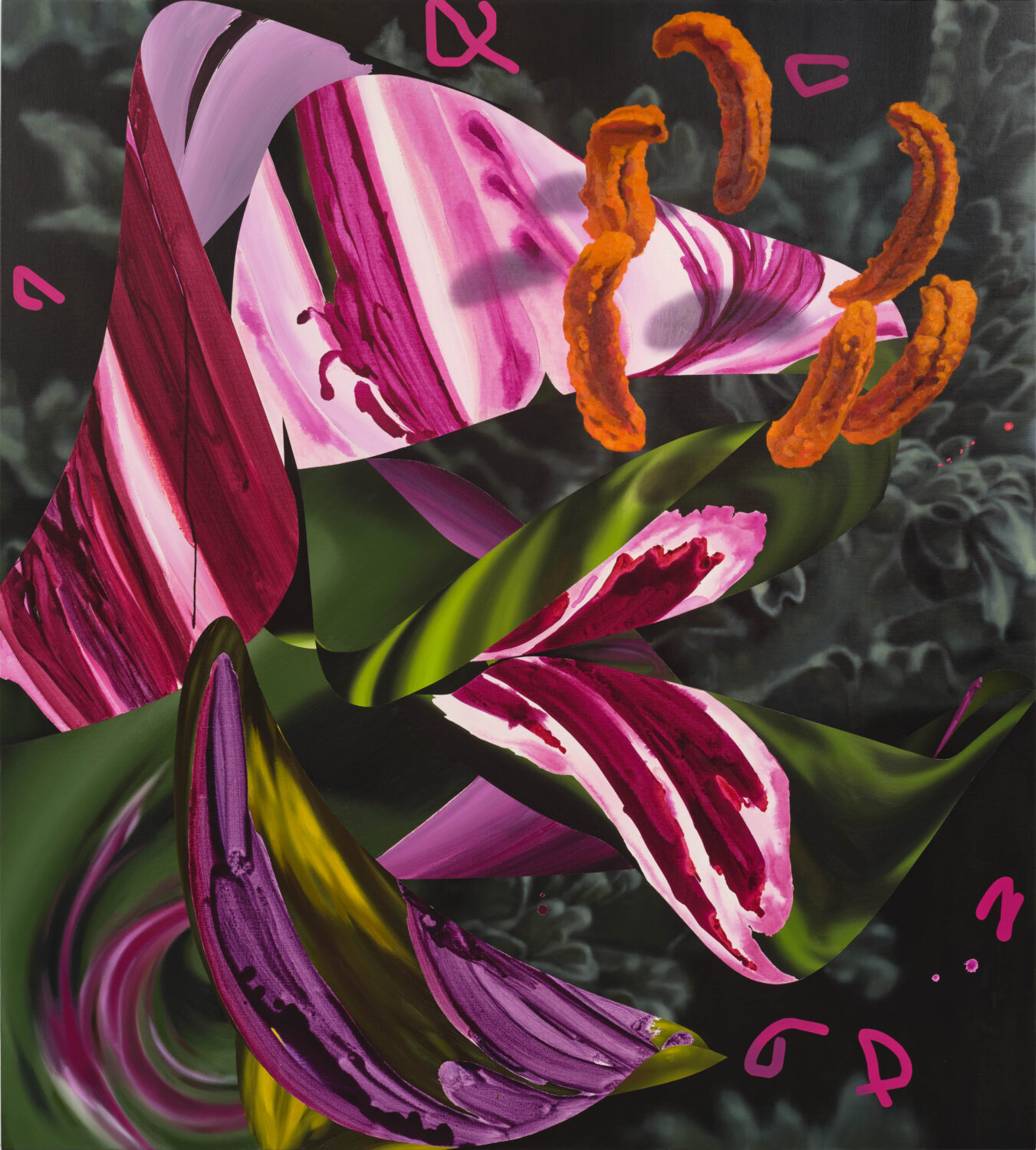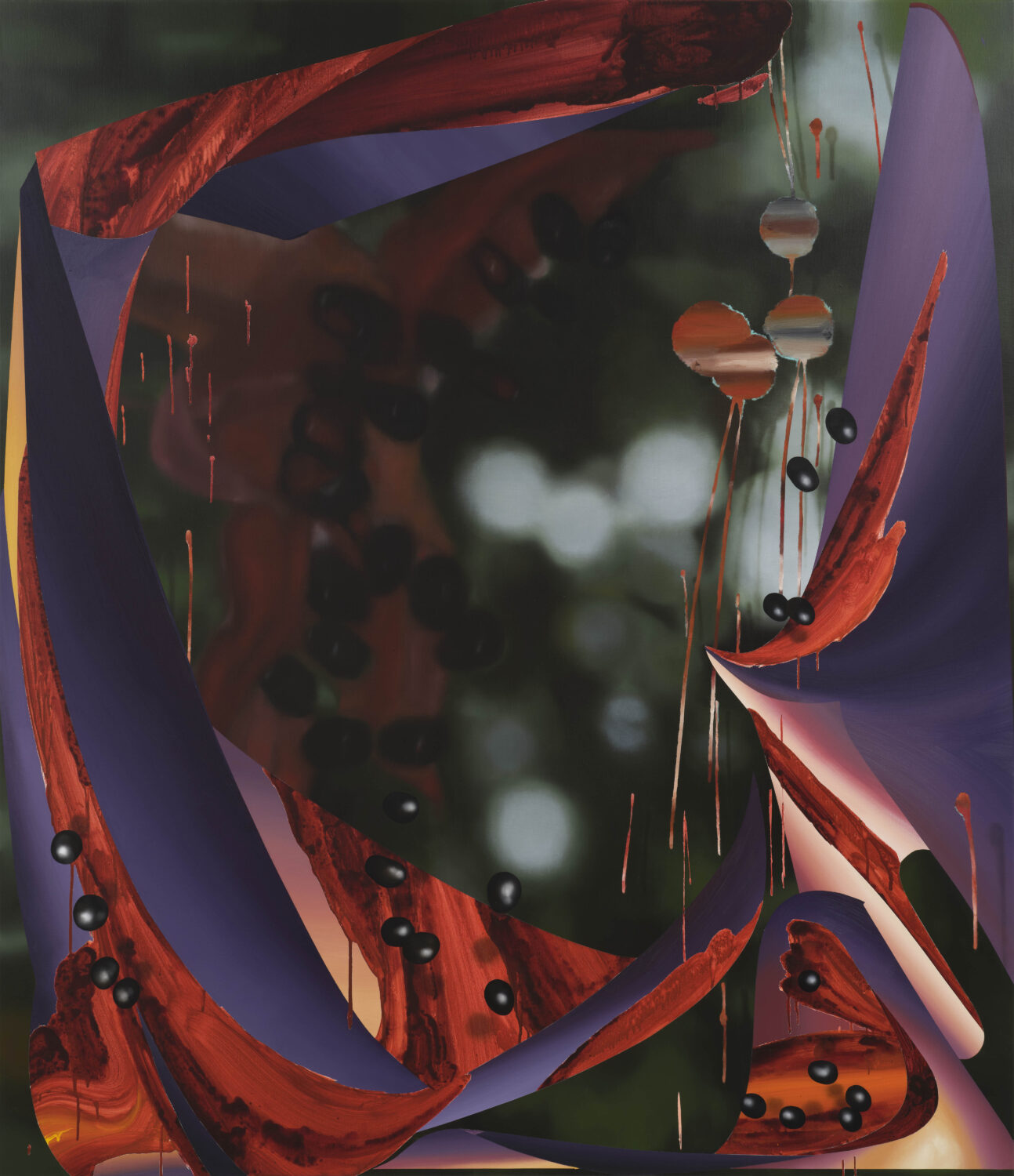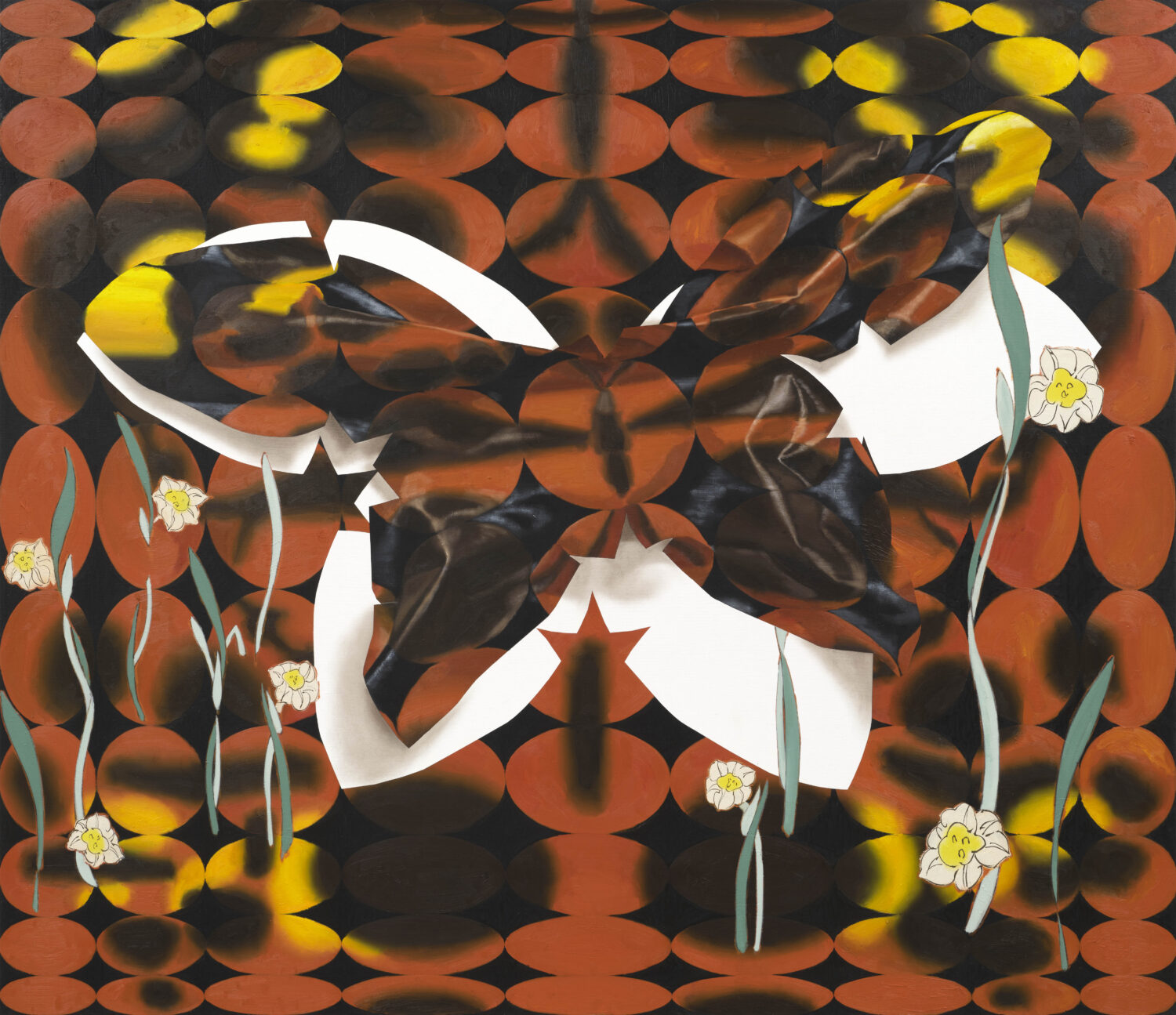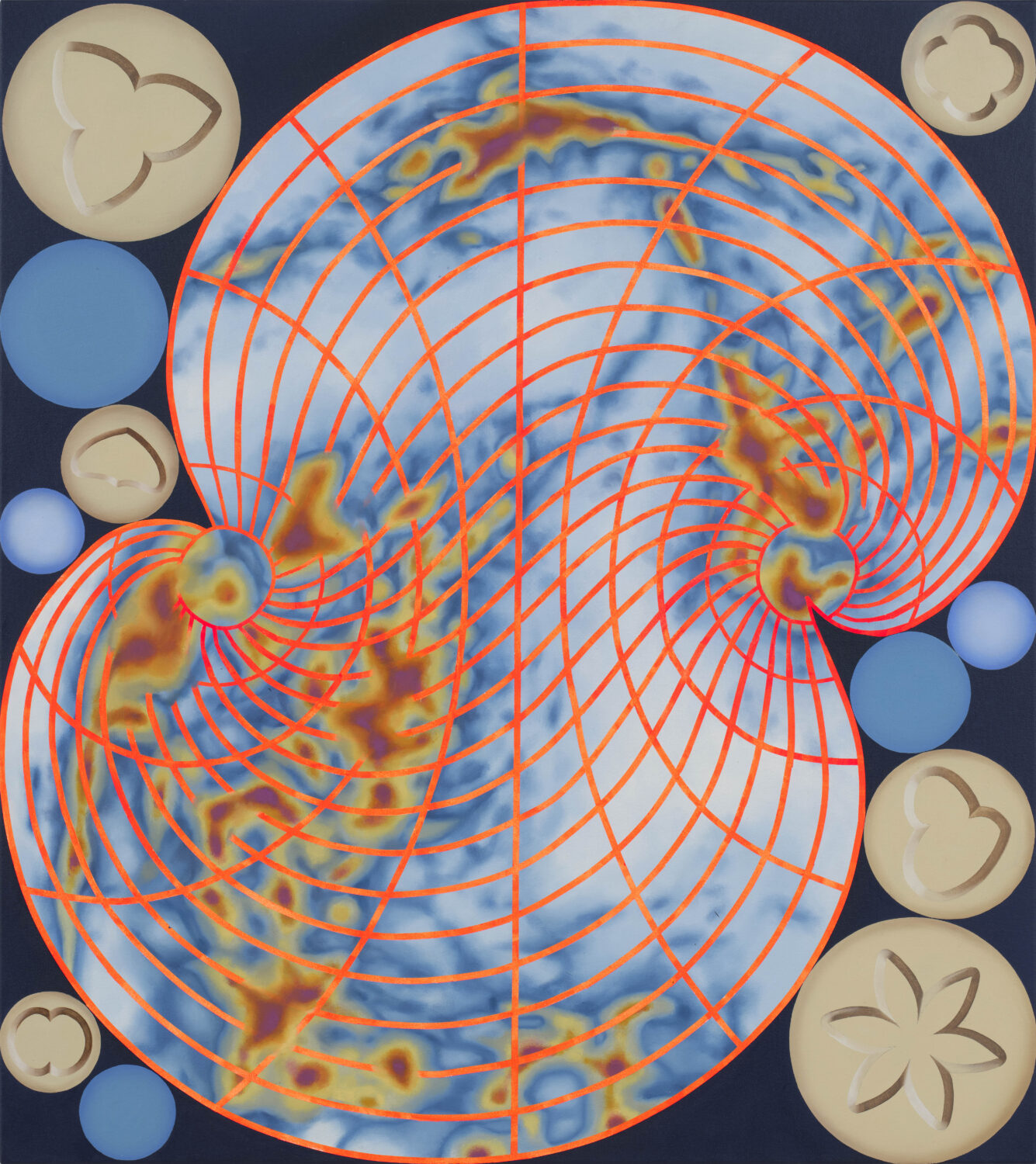Interview: Vivien Zhang on “Phantom Memories” and the Element of Chance
By Keshav AnandLondon-based artist Vivien Zhang asks us to rethink the imperfect systems — linguistic, visual, and taxonomic — that shape our understandings of the world. Drawing from personal experiences and intensive research, she incorporates diverse motifs into her abstract compositions. Her canvases become spaces where elements from different cultures and contexts converge, breaking away from their original meanings to form what Zhang describes as “alternative landscapes.” Open from today and on view until 9 November 2024, Pilar Corrias presents Flat Earth, Zhang’s second solo show with the gallery. Coinciding with the exhibition’s opening, Something Curated’s Keshav Anand spoke with the artist to learn more.

Keshav Anand: Your paintings seem to question the reliability of memory, both personal and collective. I’m curious to learn more about this.
Vivien Zhang: I’m very interested in how memory shapes knowledge, and more so, how the distortion and collapse of memory – innately or through external imposition – alters the lens through which we orient ourselves in the world. Our relationship with memory is increasingly mediated by technology. My own recollection of an event or space is intertwined with the images I’ve taken, as though they substitute my original experience.
There’s the creation of “phantom memories” – passively experiencing life through the curated feeds of others, and their experiences blend into our collective memory. Memory has become hyper-curated this way. It gets tucked away, stored for future retrieval. Have we become a generation that’s more adept at accessing memory (and knowledge) than actually holding onto them?
KA: In your manifesto, you explore the paradoxes of our technological and globalised world. How has your thinking evolved since the first version of your manifesto in 2018?
VZ: Manifesto Manifested is an evolving work of writing, hence the title “manifested.” Each newer version reworks or reflects more current ideas. In the most recent version, the manifesto has shifted to focus more on how data collection is being exploited to shape society, and how we now relate to the past and future in this information age.
Over time, I want it to become a living archive, reflecting changes in society, ongoing discussions, as well as my own shifting interests. It would be interesting to see all the versions together in ten, twenty years’ time. I’m working on the newest iteration and I’m finding myself reworking many more concepts. I think this is largely due to the real rise and integration of new, generative technologies into the public sphere. This shift has opened up a myriad of ethical dilemmas I’m excited because everything feels so fluid at the moment, unfolding in real-time. I want to capture that sense of fluidity in the writing as well.

KA: You’ve explored the use of manicules, hand shapes from early manuscripts. How do these motifs, which once signified attention and authorship, function in your digital, abstract landscapes?
VZ: Manicules are these small, hand-shaped doodles (some with very exaggerated sleeves or absurd hand shapes!) found in the margins of early manuscripts. They were used to point out specific passages, functioning like annotations or ancient highlighters for their owners.
In my work, manicules act as disruptors to order. I think of the work as site for assemblage, where multiple influences and references come together. Different registers of paint and visual fragments intersect, often colliding with one another. The manicules contribute to this frenzy, provoking questions about the hierarchies within a painting. What is prioritised, what demands attention?
KA: Could you expand on the role of randomness or chance in your work?
VZ: I’m always returning to a body of work that is composed algorithmically — dictated by a set of self-imposed rules. This introduces an element of chance into the work. I’m always asking when making work: what is the space between the work and the artist, and how can the artist relinquish control over the work at a certain point?

In my new show, Latent Heat, 2024, and Grid Method (Butterfly Choreography), 2024, are created by first dividing the canvas into squares. Then, by following a set of self-prescribed rules, shapes fall into the squares according to a series of number sets. For example, shape #1 is painted in even-numbered squares, shape #2 in odd-numbered squares, shape #3 in prime-numbered squares, and so on. As a result, the shapes congregate in different areas of the painting in very unexpected ways—often out of symmetry and balance, but producing a sense of movement. It allows me to be surprised by my own paintings, just like the viewer.
KA: How have you approached selecting the works to include in your upcoming presentation at Pilar Corrias?
VZ: For my upcoming show at Pilar Corrias, I wanted the works to explore a common set of themes, but from several different angles. I spent about a month not painting – feeling both frustrated and anxious – while working out the overarching direction.
The first painting I finished was a butterfly painting, and I’m also showing the maquette from which this painting is made. It’s the first time I’m showing these preliminary drafts in an exhibition. I think the process is actually less about selecting the works and more about orchestrating them.

At one point, I had six large paintings on the go, and I had to choreograph them, bringing them to the same level so I can begin to see the whole shape of the show. I manually draw progress bars in my sketchbook to chart the progress of each painting. In my mind, I picture a conductor raising their baton to different sections, building toward a single climax – then, when everything comes together, I set the seal on each painting.
KA: Changing pace for a moment, where are your favourite places to eat in London?
VZ: Bocca di Lupo! My partner and I had our third date in Rome (when I went on a 9-month residency), so we always choose Italian for special occasions. Closer to home in East London, I love Tayyabs, Gloria and Manteca.
KA: And what are you currently reading?
VZ: Before starting to work on my show I finished Ways of Being: Animals, Plants, Machines: The Search for a Planetary Intelligence by James Bridle. Bridle’s work and writing has really influenced my own in recent years. I found On the necessity of gardening – An art of botany and cultivation in the Perrotin bookshop a few months ago and I’m still going through that. The next one I want to start is Dispersals: On Plants, Borders and Belonging by Jessica J. Lee.
Feature image: Vivien Zhang, to be forgotten (Heliconius), 2024. Courtesy the artist and Pilar Corrias, London